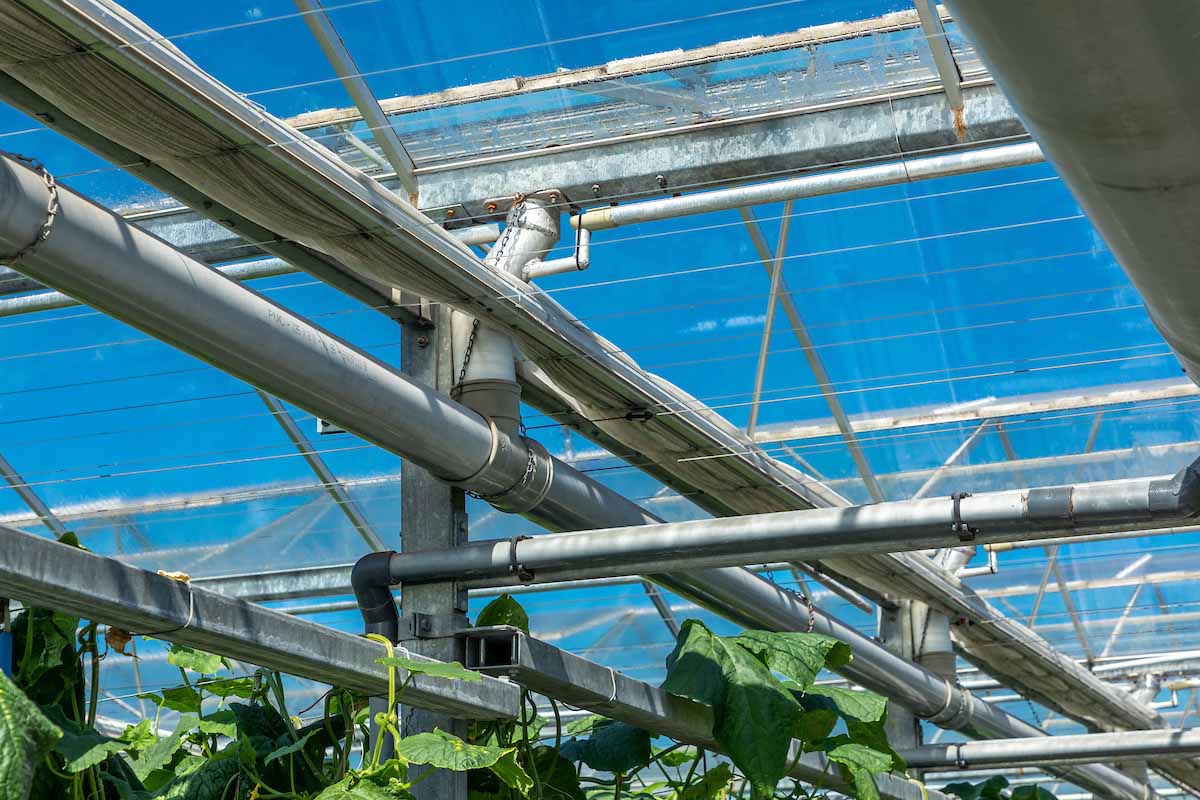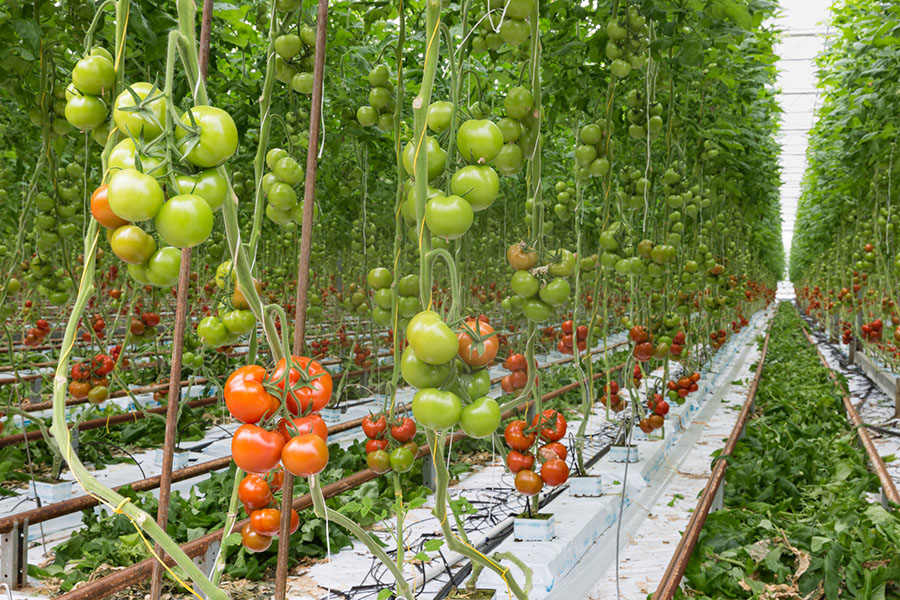Introduction
Continuing the theme of humidity control, this article goes into the detail on the value of air movement with respect to greenhouse humidity.
For more information on dehumidification and plant empowerment, see our recent articles on Greenhouse Dehumidification and Plant Empowerment & Dehumidification.
Thermodynamics
As outlined in our previous articles, plant activity requires water and nutrients to enter the plant through its roots. For water to enter the plant, it must be balanced by water exiting the plant through evaporation at the leaf.
Evaporation is governed by thermodynamics and requires a positive energy balance to occur, provided by light and/or heat, and air movement plays a few key roles in this process.
Most obviously, forced air movement allows any heat that has been added to the greenhouse to be mixed through the space, eliminating cold spots and giving each plant access to the energy it needs for evaporation to occur.
Energy addition by itself will facilitate a phase change in the water, i.e., turn from a liquid to gaseous vapour. However, without air movement, water vapour will accumulate around the plant and lead to high localised humidity and limit further evaporation by reducing the water concentration gradient. Through diffusion, water vapour will spread through the growing environment, but this is a very slow process. Air movement speeds up homogenisation and brings air with a lower concentration of water vapour to the plants, reducing saturation, which allows for further evaporation to occur.
Water vapour concentration gradient in this context describes the difference in water concentration (or humidity) between the plant surface and the local volume of air at the plant.
When the concentration gradient is high, this means that the plant and its surrounding air have a humidity difference, which drives further evaporation. Conversely, a low concentration gradient means that the humidity between the plant surface and its surrounding air are similar, and further evaporation will be limited.
A similar effect occurs in what is called the boundary layer, a thin layer of air which forms between the surface of the leaf and the bulk of the air in the greenhouse. Within this layer, gas and water transfer occurs between the stomata and the air. When air movement is low the boundary layer becomes thicker, with a high concentration of water vapour and low concentration of CO2, which limits photosynthesis. Air movement will reduce the thickness of the layer and provide an easier avenue for water and CO2 transfer.
This relationship can be thought of in terms of surface area to volume ratio. In the same way that a body with a high surface area to volume ratio can readily transfers heat, a thin boundary layer readily transfers water vapour and CO2.
In Practice
When the vents are open, there will be some air movement within a greenhouse. Wind-side openings will directly cause air currents to form within the structure as air is pushed inside, and leeside openings cause a pressure difference within the structure due to the Venturi effect, indirectly forming air currents. Although this can be controlled somewhat by vent opening angle, wind speed is a limiting factor.
Air flow will always find the path of least resistance. This means that as crops grow larger and canopies denser, these air currents may not penetrate enough to reach all the leaves. Therefore, ventilation-induced air currents will not affect each plant equally and can lead to areas of higher and lower temperature and humidity.
Finally, relying on vent opening for air movement restricts your management of the space. There will be times when air movement is desirable, whilst losing moisture/heat/CO2 is not. Opening vents above a closed screen can help reduce heat loss but will also significantly reduce air movement in the canopy. Therefore, decoupling air movement from ventilation with the use of fans allows for more precision climate control.
Horizontal air movement fans are often used, although with the goal of increasing temperature uniformity rather than disrupting the boundary layer. However, particularly with taller structures, horizontal air movement fans will encourage air movement predominantly above the plants rather than between them. Vertical air movement fans are generally considered more effective because the air pathway is shorter, air movement between plants is encouraged, and the distribution of CO2 through the crop is improved.
It is important to note that a greater number of vertical air movement fans are required, compared to horizontal air movement fans, to serve the same growing area. Although having more fan units and operating them more frequently will be an increased cost, the benefit they have in optimising humidity control makes them well worth considering.
This article was written by Eirinn Rusbridge.









